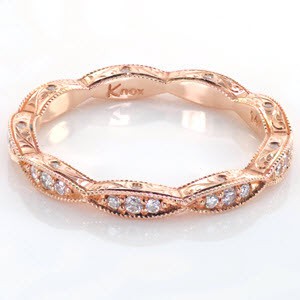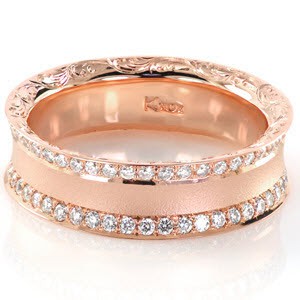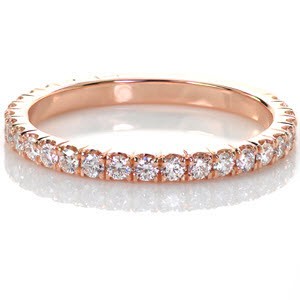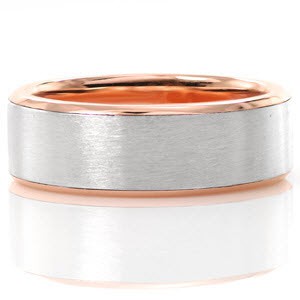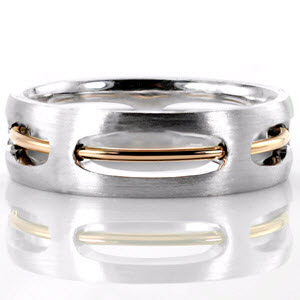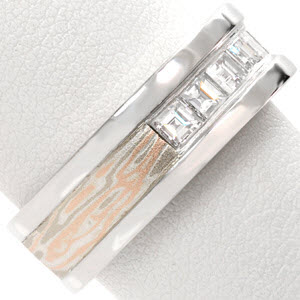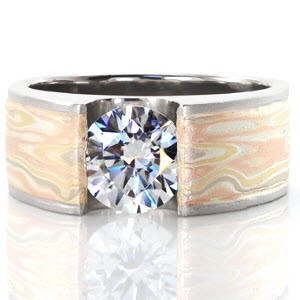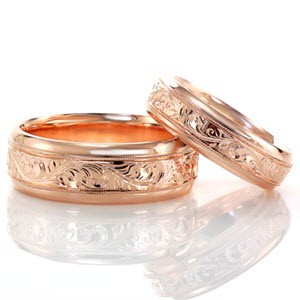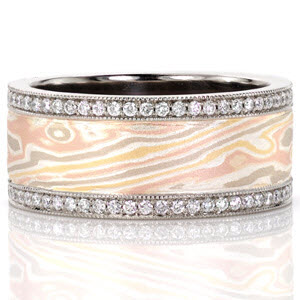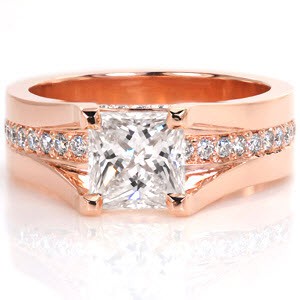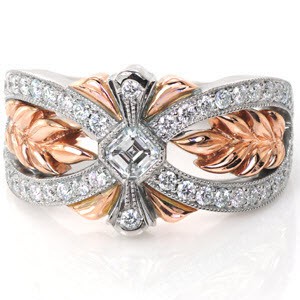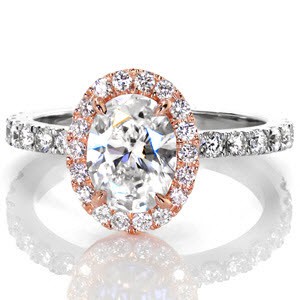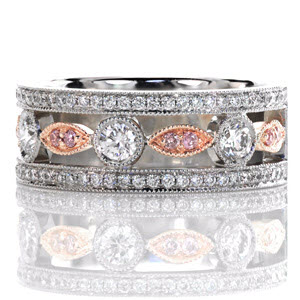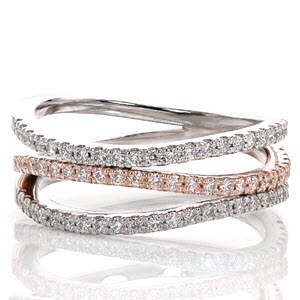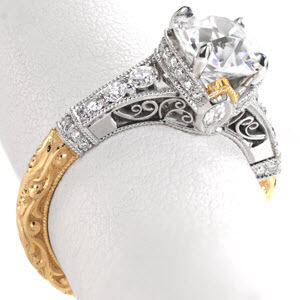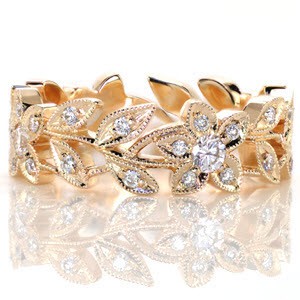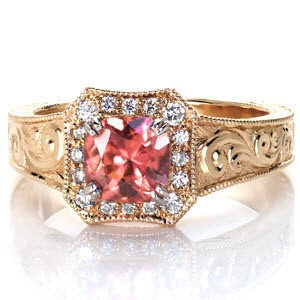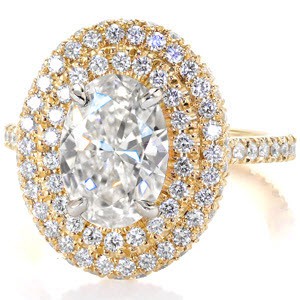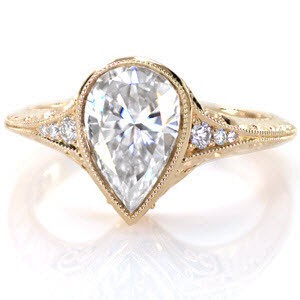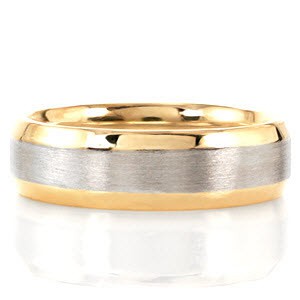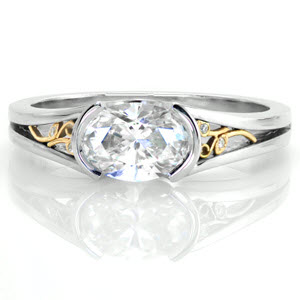Before we begin, it is important to note that gold is naturally a yellow metal, and that any other forms of gold, including white and rose, are combinations of gold with other metals – we call these combinations alloys. We’ll talk more about that in the next section, but in the meantime you should know that rose gold is an excellent way to add personality to your jewelry as well as give it a signature, unique appearance – in fact, rose gold is beginning to gain popularity and momentum among jewelers and customers alike, especially here at Knox Jewelers. Without further ado, let’s learn all about rose gold.
The Basics of Rose Gold
As we said before, rose gold is a combination of gold and another metal. 14K rose gold is usually formed with gold (about three fourths), copper (about one fifth), and a marginal amount of silver. This blend of metals allows for 14K rose gold to be strong enough for jewelry as well as have its distinctive rosy hue from which it derives its name.
Growing Popularity
Rose gold has been steadily gaining in popularity, and for good reason – no other alloy quite matches the splendor and beauty of this red-tinted gold. More and more individuals are choosing to utilize rose gold in their custom engagement rings and wedding bands. Our designers have successfully used rose gold in a variety of one-of-a-kind pieces, and we are quite thrilled by the rise in popularity of this gold alloy for many creative reasons. Even men’s wedding bands are starting to feature rose gold!
Mokume Gane
One of the areas in which rose gold is extraordinarily useful is in the practice of Mokume Gane. At Knox Jewelers, we are experts in these techniques, and having the option of using rose gold in conjunction with yellow and white gold can allow us to design some truly stunning Mokume Gane rings. In the next section, we’ll take a look at these designs as well as other ones we have crafted by hand for our customers in the past.
Our Unique Designs
Rose gold looks fantastic with many different elements. The unique engagement rings and wedding bands we have created for our customers are varied, but they all share one attribute in common: they are exceedingly beautiful with their rosy tint. Let’s take a look at some of them now:
North Shore Rose
This design makes exclusive use of 14K rose gold to give the ring a bright hue and warm texture. Combined with our detailed hand engravings and milgrain textures, North Shore Rose’s rose gold base truly looks fantastic all on its own without other metals or stones.
Flora – Autumn Wind
Flora is one of our stunning examples of Mokume Gane craftsmanship. This piece uses three metals: 14k yellow gold, white gold, and rose gold, all mixed and blended together to give the natural appearance for which Mokume Gane is so well regarded. We’ve also added two rows of lovely, sparkling diamonds to give this ring a beautiful aesthetic.
Design 2903
Finally, Design 2903 shows how regal and vibrant 14k rose gold can look in conjunction with a center stone – in this case, a 1.25ct princess cut center diamond. Rose gold is a truly versatile alloy that is both durable, striking, and warm, and we think that these designs truly make the case for its use in practically any context, including with diamonds, other stones, hand engravings, and more.
Two-Tone Designs
Designs featuring multiple metals are another way to add more detail to a design. As you can see, the warm hue of the rose gold stands out beautifully against the cool luster of the white gold.
Rose Gold Mock-Ups
We are more than happy to hand sketch or create a computer mock-up of your preferred design with rose gold. If this might be something in which you are interested, please let us know. We will create a detailed sketch of your piece and allow you to make modifications as you see fit – helping you to design a custom engagement ring or wedding band is what we are here to do.
Knox Jewelers Is At Your Service
We do not simply design stunning and unique engagement rings and wedding bands – we also go the extra mile in ensuring our customers understand exactly what goes into the process as well as give them complete freedom in the outcome of a particular design. If you have any questions about rose gold, please do not hesitate to contact us. We look forward to working together with you to design a beautiful rose gold engagement ring or wedding band!

